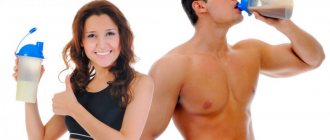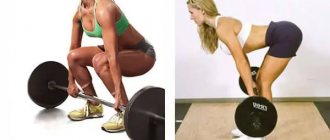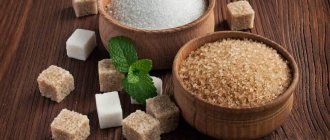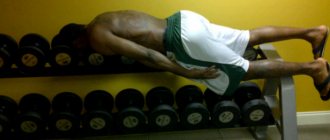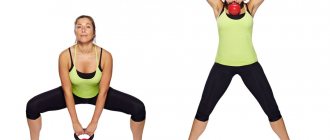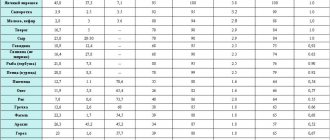Before each beach season, a huge number of people remember that it would be nice to put their body in order: get rid of excess weight, tighten muscles. This process is called weight loss and usually lasts no more than one to two months. At the same time, in bodybuilding there is such a phase as drying. Uninformed people often confuse weight loss and drying, while these are two different, albeit similar processes. So what is the difference between losing weight and cutting?
At first glance, both processes are very similar and aim to achieve the same results. In practice, they have different tasks, different time frames for achieving them, and different methods and methods.
Goals
Weight loss goal
The goal of losing weight is to lose excess weight. First of all, of course, everyone wants to remove fat. Usually, someone losing weight goes on some kind of diet (fortunately, there is a very wide choice) and enrolls in the nearest gym (sometimes he prefers outdoor activities, if the weather permits).
In most cases, a weight loss program is designed in such a way as to lose weight as quickly as possible. Please note that we are talking specifically about reducing body weight. There is no special concern for muscle preservation.
Weight loss occurs mainly by reducing the amount of water in the body and reducing muscle weight. And only last but not least can we talk about reducing the fat layer. After all, our body is very reluctant and slowly consumes fat, considering it as a kind of emergency reserve. In addition, the process of obtaining energy from fat tissue is poorly developed in most people and requires quite a long workout.
The method of losing weight is purely mechanical: by reducing caloric intake and increasing mobility.
Purpose of drying
The purpose of cutting is not only to get rid of excess fat deposits, but also to preserve the gained muscle mass and increase its rigidity and definition. A distinctive feature of drying is that it follows a period of targeted weight gain (muscle growth occurs only in conditions of a high calorie diet, when it is simply impossible to avoid fat accumulation).
An athlete, unlike just an ordinary person losing weight, is vitally interested in losing only subcutaneous fat in order to improve muscle definition, and he is not intrigued by the vague phrase “general weight loss.”
Thus, the main difference between losing weight and cutting lies in the goals. In the first case, they talk about reducing body weight in general, in the second - only about getting rid of subcutaneous fat, and, of course, while preserving muscles.
Weight loss
You need to understand that the main goal of losing weight is to get rid of excess weight, including fat deposits accumulated in our body. At the same time, we are not talking about preserving muscle mass. Consequently, such weight loss, as a rule, occurs not only due to the reduction of fat and the removal of excess water from the body, but also as a result of muscle burning.
As a rule, the process of losing weight combines some kind of diet and exercise. Moreover, diets for weight loss can be very different - from very strict (completely limiting the consumption of certain foods or fasting) to quite mild (refusing snacks or starchy foods). In other words, the number of calories in the diet is sharply reduced and mobility increases.
Rigidity of diets
Diet for weight loss
There are a great variety of diets for weight loss, that is, reducing body weight. Most of them really work, the only question is how good, useful and durable the result is.
Diets range from very strict (great food and calorie restrictions, fasting, etc.) to very soft (without snacking, including at night, reducing the calorie content of one meal, and so on). What the diet has in common is that when following them, eating sweets and starchy foods is usually not allowed.
Diet when cutting
Drying differs from losing weight in terms of severity and type of diet. A clearly defined period of time is allocated for it, during which the athlete must adhere to a strictly balanced diet. Deviation from the developed diet is not allowed, which sometimes usually involves regularly taking a precisely measured amount of food 5-6 times a day or more.
If we talk in more detail about the drying diet, then usually there is a very accurate calculation of the amount of proteins, fats and carbohydrates consumed. Carbohydrate reduction is carried out regularly according to the chosen plan, time frame and results. Complexes of vitamins and minerals are also required. Of course, sports nutrition is also necessary (fast forms of protein during the day, long forms at night).
Basic rules for drying the body
The main principles when working on muscle relief are:
- exclusion of fats;
- exclusion of glucose, as well as other types of sugar (fructose, lactose);
- frequent meals from 6 to 8 meals;
- full and constant compliance with all nutritional rules, without failures;
- most of the diet consists of protein products;
- constant consumption of large amounts of water;
- exclusion of salt;
- performing physical activity using a special technique.
Entry and exit from drying
You should not start drying abruptly, by limiting all products at once. Eliminate sweets a few weeks beforehand. Then exclude fruits, gradually reduce the amount of complex carbohydrates and fats. At the end of drying, at the exit, gradually add one product every two days, look at the body’s reaction. After drying, carbohydrates may cause severe swelling, so include them in your diet gradually. Starting with slow carbohydrates, then add fruits and dairy products until you return to your normal diet.
Proper nutrition during drying
Nutrition plays a major role in burning subcutaneous fat. An individual diet is selected for each organism. Each person has his own characteristics: body structure (ectomorph, mesomorph, endomorph), and metabolic rate. Some people are allowed to consume more carbohydrates, others only proteins. To do this, you need an experienced consultant who will take into account all the features.
How to calculate the number of calories?
To lose weight with high physical activity, you need to spend from 22 to 26 kilocalories per kilogram of your own weight. Let's take a man weighing 80 kg as an example. We multiply body weight by 22 calories, we get 1760 - the total number of calories per day.
Find out more about how to properly dry the body for men when working on muscle relief.
The required amount of protein is 3 grams, multiply by your own weight, we get 240 g of protein. One gram of protein contains 4 kilocalories. We multiply this amount by 240 g, we get 960 calories from protein. We take a table of products according to the composition of calories and dietary fat. We look at which products and in what quantity contain each substance per 100 g. At the same time, we choose only approved products. We allow 25% of the correct fats from the total amount of calories (1760 multiplied by 0.25), that is, we get 440 calories. Since one gram of this macronutrient contains 9 calories, divide 440 by 9 to get 49 grams of fat. To determine the amount of carbohydrates , we subtract proteins and fats from the total daily calorie content (1760 – 960 – 440 = 360 g of carbohydrates).
In this way, the daily calorie content is calculated, depending on the ratio of proteins, fats and carbohydrates.
The role of carbohydrates and their quantity during drying
The purpose of carbohydrates is to provide the body with energy. Fat burning occurs faster when there is a shortage of energy, which the body begins to produce from subcutaneous fat. The intake of simple carbohydrates during drying leads to its emergency storage in the form of fat, which the body will save for energy. Therefore, any excesses are excluded. Otherwise, drying will not make any sense. For this diet, only complex carbohydrates that take a long time to digest are allowed. They will provide the body with energy, and the fiber contained in complex carbohydrates will ensure the normal functioning of the intestinal tract. But their number is still very limited. You are allowed to consume one gram of carbohydrates per kilogram of weight, unless it is completely carbohydrate-free.
The following carbohydrates are allowed during drying:
- unpolished brown rice;
- vegetables containing fiber and water, without sugar (cucumbers, cabbage, peppers, lettuce, greens).
If you want to eat sweets, you can use a natural sweetener with stevia, which does not contain carbohydrates. It can be added to tea or coffee.
No carbohydrates
This diet consists of consuming foods that contain only protein. Naturally, all carbohydrates are completely excluded.
What to exclude from your diet:
- rice and other cereals;
- any vegetables;
- any fruit;
- sugar and sweeteners (except stevia).
What foods can you eat?
Only low-fat protein foods are allowed:
- chicken fillet (without skin);
- beef, veal;
- rabbit meat;
- quail meat;
- turkey fillet;
- chicken eggs without yolks;
- quail eggs;
- seafood: tuna, hake, pollock, squid, mussels, shrimp, clams;
- drinks: water, green and black tea, coffee.
Fat deficiency
In fact, one of the main disadvantages of drying is precisely the lack of fat. Fats are necessary to nourish cells, therefore, with a low-fat diet, dry skin appears, nails and hair deteriorate. Fats are also necessary to ensure constant contraction of the bile sphincter. Without fats, bile stagnates and increases. In women, the disadvantage of such a restriction is a decrease in the level of estrogen, the main function of which is gestation. When the level of fat in the body is low, the menstrual cycle is disrupted. Therefore, you need to think carefully before you start cutting fat.
Why is it important to drink water?
Water should not be refused under any circumstances. This is ensuring the life of every cell, all organ systems and tissues. Especially during physical activity, dehydration should not be allowed. In addition, water thins the blood, which thickens under stress. You need to consume 30 ml of water for every kg of weight. Therefore, a person weighing 70 kg needs to drink 2100 ml of water per day. When drying, this amount increases to 2500 ml of clean water (tea, coffee are not taken into account). Especially on a diet without salt, a constant supply of water with microelements is necessary.
Special means
If the goal is to reduce overall weight, then everything that comes to hand is often used. There will be various juices, spicy seasonings, coffee, and green tea. The distinctive feature of all this is the weak effect. Of course it's better than nothing. Especially if the goal is weight loss.
If athletes use such products when cutting, they treat them extremely carefully. All aspects of the operation of what is being used are taken into account. For example, instead of coffee, preference will be given to green tea. It is also important how a particular substance affects fat, whether it retains water, whether it contains sugar, and so on. This is a whole science, large and interesting.
Efficiency
What is more effective: losing weight or cutting? The answer is not so obvious, since the goals and quality criteria are different.
In case of weight loss, the result is monitored using floor scales and a mirror. The process ends when what is seen begins to suit the person losing weight, or when the nerves give in. Next, it is important to maintain the achieved result. This is where the problem lies. Statistics say that about 95% of people who have lost weight gain the weight back very quickly, and in the end they end up with even more weight than they started losing weight with. Maintaining results requires a lot of willpower, changing habits and thinking. This is facilitated by calm, leisurely weight loss.
Drying, in turn, is carried out for the result, which is regularly assessed by both the athlete himself and the coach. And then also as judges at competitions. The result is a maximally sculpted body with a minimum of subcutaneous fat and water. This state is not healthy and unnatural. Therefore, after the competition for which drying was carried out, the athlete must gradually return to his normal diet. Thus the body also changes. But this change (in general, a small increase in water and fat) cannot be considered as a loss of results, since the goal has already been achieved.
Drying among professionals and its role in preparing for competitions
For professionals, drying is the most important and final step to their competitive form. Work on muscles over many years is visible in its quality only due to the burning of excess fat. By reducing subcutaneous fat, you can view the quality of the muscles worked.
Without lean muscle mass, the athlete will not be allowed to compete or will receive the lowest score because he did not meet his standard. Therefore, for professionals this is a crucial moment in preparation for competitions.
Athletes can dry from one month to three, depending on the thickness of subcutaneous fat and metabolism. Sometimes it can be a carbohydrate-free diet if the athlete does not have time to prepare for going on stage. Athletes often skip water a few days before a competition to flush out the water and keep their muscles as dry as possible. But this is not useful, so it is better not to use the methods of professionals in everyday life.
Is it possible and necessary for everyone to dry themselves?
Can an ordinary person, not an athlete, refuse to lose weight? And, like bodybuilders, get rid of excess weight using a set of drying measures? No, and here's why:
- drying is violence against the body; professional athletes are in a state of constant stress for several months
- drying requires the use of a special, monotonous diet
- drying requires deep knowledge in nutrition, biochemistry, and so on
- drying involves active, frequent, specific training
- cutting also means maintaining the achieved level of muscle mass (which most people simply do not have), which requires taking special sports nutrition
The duration and severity of drying make it unsuitable for use by people who do not set themselves any competitive goals.
- Tweet


